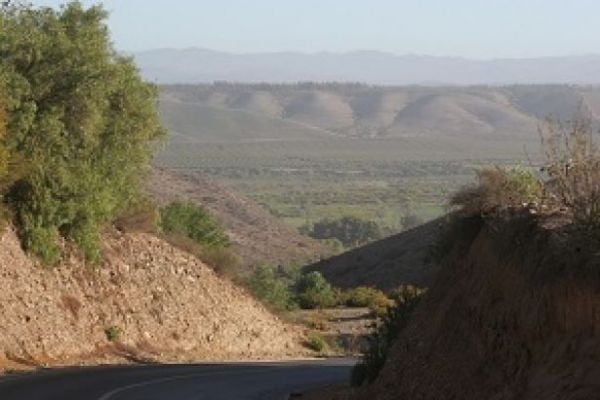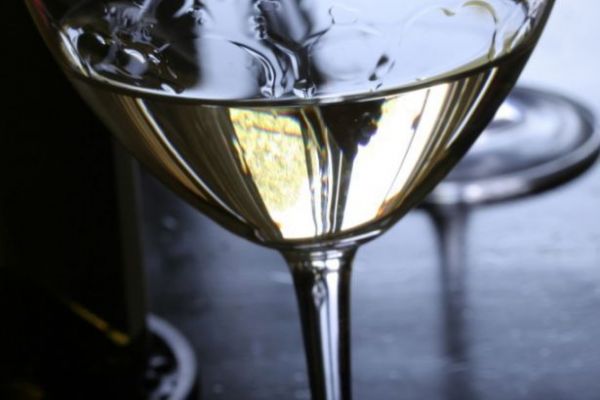The Kingston, Ontario, town crier, in fur-trimmed tricorne hat and bright, red coat, rang a brass bell and shouted “Hear ye, hear ye” as the lead-in to my most surprising tasting this year: “The Judgement of Kingston.”
The blind competition, held Nov. 6, pitted such top California chardonnays as Chateau Montelena against those from Prince Edward County, a little-known, newly exciting wine region on the north shore of Lake Ontario.
I was the lone American on the judging panel, but like the Canadian judges, I ranked Ontario chardonnays as No. 1 and No. 2, ahead of the oakier Napa examples. They were brilliant: light and crisp, with spiky acidity, succulent layers of lemon-lime and stony flavors, and a flinty elegance missing from the California wines.
The two winners, Rosehall Run JCR Vineyard (No. 1) and Closson Chase South Clos (No. 2) reminded me of premiers crus white Burgundies—at a much cheaper price.
Sipping and spitting under the steady gaze of historic portraits in Kingston’s grand City Hall added some gravitas to the results, but really, I shouldn’t have been that surprised.
These Canadian whites have been winning international awards for the past three years and are on the verge of breaking out big-time, onto the global wine map.
Chardonnay is a surprisingly adaptable grape, but the best wines come from cool-ish spots where grapes often teeter on the cusp of ripeness. That brings out expansive aromas, vivid minerality, and a backbone of lively acidity. Too much sun makes chardonnays fat and dull—a style increasingly out of fashion. Cool-climate chardonnay is in.
Prince Edward County (known in Ontario as “the County”) is the latest chilly location to promise chardonnay greatness, and it’s now home to nearly 40 boutique wineries.
The CountySo this month, I headed out for a first-hand look at the landscape that produced the winning wines.
The County, about 110 miles east of Toronto, is your basic charming farm country. A peninsula that juts out into cold, deep Lake Ontario, it’s separated from the mainland by fingers of water. The gently rolling hills are fringed with sandy beaches. The history of grape vines here only began with the 21st century.
A chilly wind blows in from the lake in November, as I discovered standing in a vineyard at the Norman Hardie winery, a rising star and one of the County’s pioneers of great chardonnay (and pretty good pinot noir, too). The wines weren’t in the Kingston tasting, but they turned out to be the best I tasted from the County.
Hardie, who has made wine in Oregon, South Africa, California, New Zealand, and Burgundy, is genial and outspoken.
“I came back in 2001 for the limestone and clay soil and the climate,” Hardie, said, unrolling a map in his tasting room. “The towns here were organized by soil types more than 100 years ago.” He dug 150 holes in the property and sent bags of soil to Burgundy for analysis before buying. The price was right, $1,800 an acre. Now primo vineyard land costs up to $7,000, still pocket change compared to prices in Burgundy.
The chardonnay vineyard in front of the winery is thick with chunks of limestone. The lake, Hardie said, is a stabilizing influence on temperature and protects vines from spring frost, but in winter they’d freeze to death if he didn’t bury the vine shoots.
As we tasted a range of his wines—he makes four chardonnays, plus pinot noir, riesling, pinot gris and more—in his no-frills winery, I thought the chardonnays were the closest thing to savory, tangy Chablis I’ve tasted outside Burgundy. Even one from the 2007 vintage was still vibrant and delicious.
The local soils and climate offer a mosaic of tiny microclimates, perfect for creating subtle differences in the wines. My next stop, only a few miles away, was Closson Chase, a purple barn-like winery, where bearded winemaker Keith Tyers gave me an enthusiastic overview of his vineyards and wines, which are rounder and slightly richer. (He, too, makes aspiring pinot noirs.)
Like many County winemakers, Norman Hardie also makes chardonnays from grapes purchased from the better-known Niagara region on the south shore of Lake Ontario. They taste more like Macon and Meursault.
Niagara WinesMy tastings didn’t end there, either. Ten days later, a dozen talented winemakers from Niagara’s three sub-regions and Prince Edward County arrived in New York to pour their about-to-be-released wines at a tasting, so I could calibrate differences. (See below.)
Niagara is warmer than Prince Edward County, and the chardonnays are broader, richer, riper and more powerful, but I’m persuaded that Prince Edward County produces Ontario’s most exciting examples.
Still, I’m keeping an open mind. Even farther north, along the rugged granite shores of Lake Huron’s Georgian Bay, winemakers are planting chardonnay vineyards in a land of apple and pear orchards. I can’t wait to see what they come up with.
Ontario Chardonnays to Buy Right NowPrince Edward County
2014 Norman Hardie County Unfiltered ($35)
Very pure, with a bright, intense green-apple character and smoky aromas, this Chablis-like white is all racy minerality. (All Hardie’s chardonnays are stunning.)
2014 Closson Chase South Clos ($30)
Rounder and riper than many County chardonnays, this delicious example from a single vineyard came No. 2 in the tasting.
2013 Rosehall Run JCR Vineyard ($22)
Sleek and savory, the No. 1 winner in the Prince Edward County vs. California tasting is full-bodied and elegant, with layers of pear and lemon and tangy minerality.
2014 Huff Estates South Bay ($22)
This bright, fresh, golden chardonnay made by a French winemaker has just enough oak, a creamy texture, and notes of green apple and spice.
2014 Keint-He “Greer Road” ($26)
Very citrusy and succulent, this pale, tart wine from a single vineyard in PEC has a water-on-stone element and a citrusy cool-climate snap.
Niagara
2013 Southbrook Vineyards Poetica ($50)
Golden and round, with aromas of white flowers, this wine comes from the Four Mile Creek area of Niagara-on-the-Lake.
2013 Thomas Bachelder Wismer Foxcroft No. 2 ($45)
This creamy textured, lemony, and savory wine is my favorite chardonnay from this winery in the Niagara Escarpment sub-region. Bachelder also makes wines in Burgundy and Oregon.
2013 Malivoire Moira ($30)
Rich and lush, with notes of mandarin orange, pear, and vanilla, this white is from the winery’s oldest vines in the Niagara Escarpment.
2013 Tawse Quarry Road ($30)
Banker Moray Tawse owns this organic, biodynamic winery, as well as vineyards in Burgundy. Barrel-fermented, this chardonnay is lean, mineral, citrusy, and multilayered.
News by Bloomberg, edited by Hospitality Ireland









